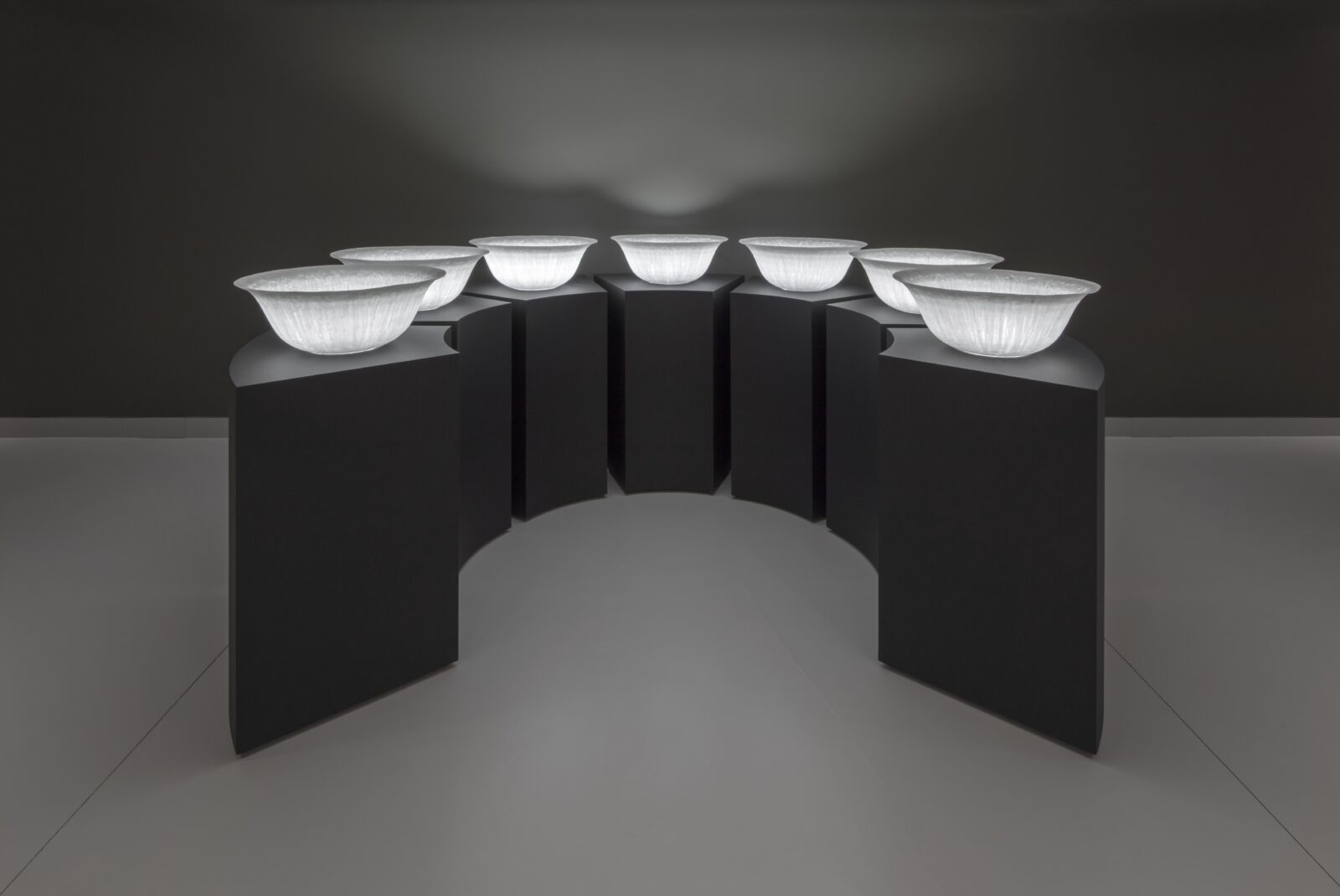Rohini Devasher (b. 1978, New Delhi, India)
Rohini Devasher works in a variety of mediums and explores how the act of observing is defined by the relativity of the field or site from which it occurs, as well as the relation of the observed object to the observer.
For Shrine Room Projects, Devasher presents a two-channel video installation, 300 Km or the Apparent Movement of the Sun 2020), a powerful visual meditation on the observation of the sun moving across the sky. In the mesmerizing video—which stems from her research with amateur astronomers at the Kodaikanal Solar Observatory in India—the movement of the sun is captured on the metal plate of a spectroheliograph. Yet the sun’s motion is actually an illusion, the result of manipulating the scientific equipment. Devasher invites us to observe the relationship between the human and the cosmos and to cross-examine our perceived perception vis-à-vis time, space, and the world around us.
Palden Weinreb (b. 1982, New York, NY)
Palden Weinreb is a visual artist who draws on Buddhist motifs and ideas and works in a repetitive approach guided by minimalistic aesthetics. Many of his artworks are an invitation to look to where there is a seeming void—between lines, forms, light, and darkness.
For Shrine Room Projects, Weinreb presents two mixed-media works created in wax and illuminated by LED lights. Offerings (2014) and Untitled (Stupa) (2013) look at first glance like highly iconic Buddhist-inspired objects, yet both artworks are an invitation to look beyond the surface. Once the viewer approaches and transcends their first perception of these objects, deeper layers of meaning are revealed.
Exhibition Audio Guide

